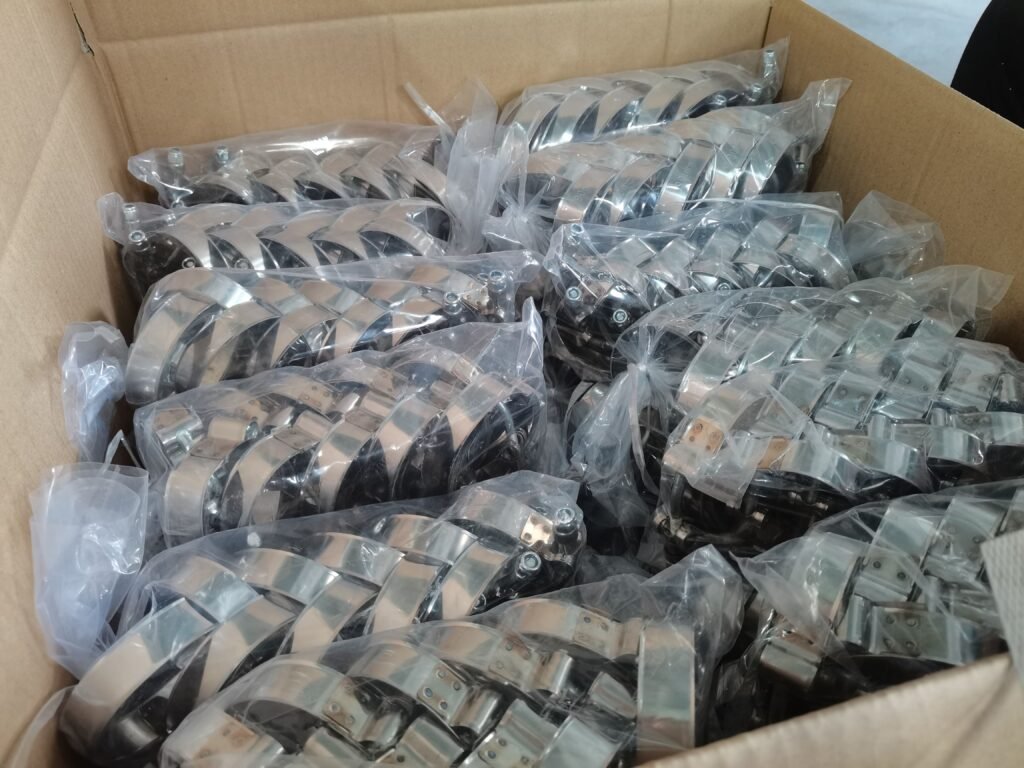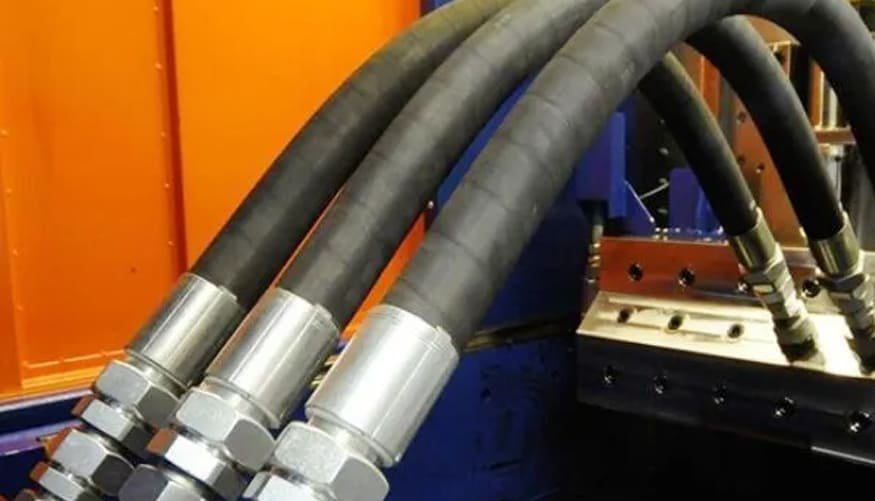Improper use of installation clamps is one of the most common causes of costly downtime in heavy equipment. If left unchecked, leaks can damage machinery and endanger operators. Most failures can be prevented if clamps are used correctly.
To prevent hydraulic hose failures, hose clamps must be installed evenly around the hose and fitting, without misalignment or overlap. This evenly distributes pressure, minimizing leaks and damage. Each clamp type has a recommended torque setting; overtightening or undertightening increases the risk of failure. Regular inspections and adherence to OSHA safety standards ensure long-term reliability.

Understanding hose clamp types, standards, and best practices can mean the difference between a safe, efficient system and a costly failure. Let’s explore key points every operator should know.
Can hose clamps be used on hydraulic hoses?
Hydraulic hoses in heavy equipment production lines can reach pressures of thousands of PSI, far exceeding the capabilities of standard automotive clamps. This raises the question of whether a simple clamp is strong enough to withstand these high pressures.
The answer is yes, but not all hose clamps can. Hydraulic systems require high-pressure clamps specifically designed for these conditions. These clamps provide a secure, reliable grip on fittings, preventing leaks even under severe vibration and load fluctuations. Unlike small worm gear clamps found on vehicle coolant lines or in household applications, hydraulic hose clamps are capable of withstanding significant stress.

When properly selected and installed, they:
- Hold fittings securely against vibration and movement
- Prevent hydraulic fluid from leaking, which can lead to leaks
- Reduce the risk of hoses loosening during operation.
- Extend hose life by reducing unnecessary movement.
However, incorrectly used, weak, or improperly installed clamps can eventually loosen, leading to leaks, sudden hose bursts, and other problems. Use heavy-duty T-bolt clamps or specialized hydraulic clamps suitable for your application.
Hydraulic Hose Clamp Types and Materials
Not all clamps are created equal. Choosing the wrong type or material can shorten hose life. The following are the main types of clamps you’ll encounter in hydraulic applications.
- Types of Hose Clamps: Worm gear clamps: Common and inexpensive, but not recommended for high-pressure hydraulic systems. They are best suited for low-pressure systems.
- T-bolt clamps: Heavy-duty clamps that provide even pressure around the hose. The best choice for high-pressure hydraulic lines.
- Spring clamps: Designed to maintain tension as hoses expand and contract with temperature fluctuations.
- Double-ear clamps: Permanently crimped into place. They provide a secure fit but require special tools for installation.
- Hydraulic clamps: Specially designed to withstand vibration and extreme pressure, they are commonly used in industrial and mobile equipment.
Hose Clamp Materials:
- Stainless steel: Corrosion-resistant and durable, making it a top choice for harsh environments.
- Galvanized steel: More affordable, but less corrosion-resistant. Suitable for indoor or light-duty use.
- Plastic or composite materials: Primarily used to bundle or organize hoses, rather than seal them under pressure.
Choosing the right clamp requires considering not only hose size and pressure rating, but also the application environment. For example, stainless steel clamps in mining or marine applications need to be resistant to rust and degradation.
Common Causes of Hydraulic Hose Failure
The most common causes include:
- Abrasion: The hose wears down the outer layer due to prolonged friction with metal edges, the ground, or other hoses.
- Misaligned Hose Clamp Installation: Improperly installed hose clamps can cause uneven pressure, leaks, or fall off.
- Improper Torque: Overtightening can damage the hose, while undertightening can cause leaks.
- Aging and Fatigue: Rubber hardens and cracks over time, especially when exposed to UV rays or extreme temperatures.
- Temperature: Prolonged high temperatures cause rubber to age, harden, and crack. Hoses in low temperatures lose their flexibility and are susceptible to cracking.
Many problems can be prevented by properly securing the hose and reducing vibration. Regular inspection is also necessary.
How to choose the right hydraulic hose clamp?
Choosing the right hose clamp for your application is crucial. Consider the following key factors.
- Hose Diameter Matching: You should select a clamp whose inner diameter matches the outer diameter of the hose. If the clamp is too tight, it will compress the hose and damage it. If the clamp is too loose, it may slip under vibration.
- Material Selection: Select a hose clamp based on your application environment. Stainless steel or steel clamps are recommended for high-pressure hydraulic systems. They are pressure-resistant, corrosion-resistant, and high-temperature resistant. Please contact us to discuss your specific application, and we will recommend a suitable material.
- Pressure Rating: Each hose and clamp has a different pressure rating. You should select a hose clamp that can withstand the maximum pressure of the hydraulic line.
- Heat and Chemical Resistance: You need to confirm that the clamp material can withstand the operating temperature and is resistant to hydraulic fluids or chemicals to select the right hose clamp material for your application.
After considering these factors, you should also choose a well-known, reputable, and reliable hose clamp manufacturer. With 23 years of experience, you can be confident in choosing us. We offer competitive pricing and excellent quality.
How to Use Hose Clamps Best
To get the best results from hose clamps and improve hydraulic system reliability, here are some tips:
- Evenly position the clamps on the hose and fitting to avoid overlap.
- Use the correct torque specifications, measured with a calibrated tool.
- Avoid overtightening, which can damage the hose.
- Use two clamps on critical or high-pressure connections for added safety.
- Inspect the clamps and hoses regularly for signs of wear or leaks.
How to Properly Install a Hose Clamp to Prevent Hydraulic Hose Leaks
- Select the appropriate clamp type based on the pressure and hose diameter.
- Inspect the hose end to ensure it is clean and free of cracks or wear.
- Place the clamp approximately a quarter inch from the hose end, ensuring it is evenly positioned.
- Gradually tighten the clamp, checking that it is not twisted or overlapping.
- Use the correct tool to tighten the clamp to the recommended value.
- Check the alignment to keep the hose straight.
Conclusion
Proper use of hose clamps is more than just maintenance; it’s a safety requirement. By selecting the right clamp type and inspecting it regularly, you can prevent leaks, reduce downtime, and protect workers and equipment.




